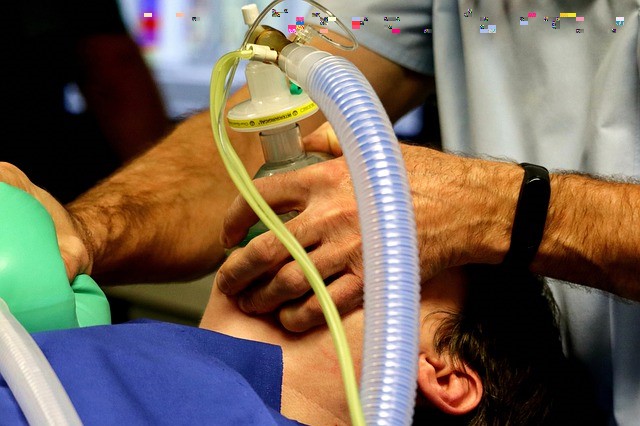
Increased Mental Disorder Diagnoses in Children After Invasive Mechanical Ventilation (IMV)
Invasive Mechanical Ventilation (IMV): this Concise Critical Appraisal highlights an article in Pediatric Critical Care Medicine that sought to determine the association between invasive mechanical ventilation—a known predictor of adverse outcomes in children—and subsequent new neurodevelopmental and psychiatric disorders after pediatric intensive care unit hospitalization by reviewing Texas Medicaid Analytic eXtract data
Because the risk of death continues to decrease in children with critical illness, physical, cognitive, and psychiatric morbidities following recovery are increasingly being studied.
The scope of these morbidities has not been clearly elucidated.1,2 Geneslaw et al sought to determine the association between invasive mechanical ventilation (IMV)—a known predictor of adverse outcomes in children—and subsequent new neurodevelopmental and psychiatric disorders.3
They secondarily looked for an association between IMV and psychotropic medication use
The authors accessed the Center for Medicare and Medicaid Services’ Medicaid Analytic eXtract (MAX) files for all children enrolled in Texas Medicaid between 1999 and 2012.
The database allowed for a large study, containing data for a longer time frame compared to most prospective studies and containing sufficient data to reliably track exposures and outcomes.
The authors identified children between ages 28 days and 18 years old with a primary respiratory diagnosis who were admitted either to a pediatric intensive care unit (PICU) or a general inpatient unit and who survived to discharge.
Clinical data were available on all children for at least 2 years before hospitalization to allow assessment of preexisting comorbid conditions.
The children were followed until they were lacking Medicaid eligibility for at least 10 months of the calendar year after discharge.
Exclusion criteria included previously diagnosed psychiatric disorders, previous PICU admissions, and any preexisting complex condition that would affect the patient’s development.
Each child with a PICU admission was propensity score matched using preadmission characteristics to 5 general pediatric inpatients.
Separate matches were made between patients in the PICU requiring IMV and general inpatients, and between PICU patients without IMV and general inpatients
Of the more than 2 million inpatient hospitalizations identified, the authors were able to match propensity scores for 1351 children requiring IMV with 6755 general inpatients and 7780 PICU patients with 38,900 general inpatients.
They found that the overall incidence of any new mental disorders was highest in the IMV group (7.2 diagnoses per 100 patient-years vs. 5.0 diagnoses per 100 patient-years in the matched general inpatient group).
The PICU group incidence of new mental disorders was also mildly increased (5.7 per 100 patient-years vs. 5.3 diagnoses per 100 patient-years in the matched general inpatient group).
The mental disorder with the highest incidence was developmental delay.
The IMV group also tended to be younger at diagnosis than its matched group
The hazard ratios for the use of psychotropic drugs subsequent to hospital admission were 1.67 in the IMV group and 1.11 in the PICU group, suggesting increased risks.
In this cohort of Medicaid-enrolled children hospitalized with a primary respiratory issue, the authors were able to demonstrate a higher rate of subsequent mental disorder diagnoses as well as an increase in post-hospitalization psychotropic medication use in children requiring IMV compared to a matched group admitted to a general inpatient unit.
The reasons for this difference have been discussed in other articles; they may be mediated by multiple factors including hypoxia, generalized inflammation, and the use of analgesics/sedatives, although this remains unclear.4
This study provides insight into the association between critical illness (specifically acute respiratory failure and the use of IMV), the development of post-PICU mental disorders, and the use of psychotropic medications.
Limitations noted by the authors include the inability to prove causality retrospectively, selection bias related to the use of the database, and possible underdiagnosis of preexisting developmental delays.
The authors’ use of the Medicaid database is novel in its approach to finding these associations and will hopefully lead to other similar studies of other elements of critical care.
References
Davydow DS, Richardson LP, Zatzick DF, Katon WJ. Psychiatric morbidity in pediatric critical illness survivors: a comprehensive review of the literature. Arch Pediatr Adolesc Med. 2010 Apr;164(4):377-385.
https://pubmed.ncbi.nlm.nih.gov/20368492/
Ong C, Lee JH, Leow MKS, Puthucheary ZA. Functional outcomes and physical impairments in pediatric critical care survivors: a scoping review. Pediatr Crit Care Med. 2016 May;17(5):e247-e259.
https://pubmed.ncbi.nlm.nih.gov/27030932/
Geneslaw AS, Lu Y, Miles CH, et al. Long-term increases in mental disorder diagnoses after invasive mechanical ventilation for severe childhood respiratory disease: a propensity matched observational cohort study. Pediatr Crit Care Med. 2021 Dec 1;22(12):1013-1025.
https://pubmed.ncbi.nlm.nih.gov/34261946/
Kachmar AG, Irving SY, Connolly CA, Curley MA. A systematic review of risk factors associated with cognitive impairment after pediatric critical illness. Pediatr Crit Care Med. 2018 Mar;19(3):e164-e171.
https://pubmed.ncbi.nlm.nih.gov/29329164/
Read Also:
Emergency Live Even More…Live: Download The New Free App Of Your Newspaper For IOS And Android
Manual Ventilation, 5 Things To Keep In Mind
FDA Approves Recarbio To Treat Hospital-Acquired And Ventilator-Associated Bacterial Pneumonia
Pulmonary Ventilation In Ambulances: Increasing Patient Stay Times, Essential Excellence Responses
Ambu Bag: Characteristics And How To Use The Self-Expanding Balloon
AMBU: The Impact Of Mechanical Ventilation On The Effectiveness Of CPR



